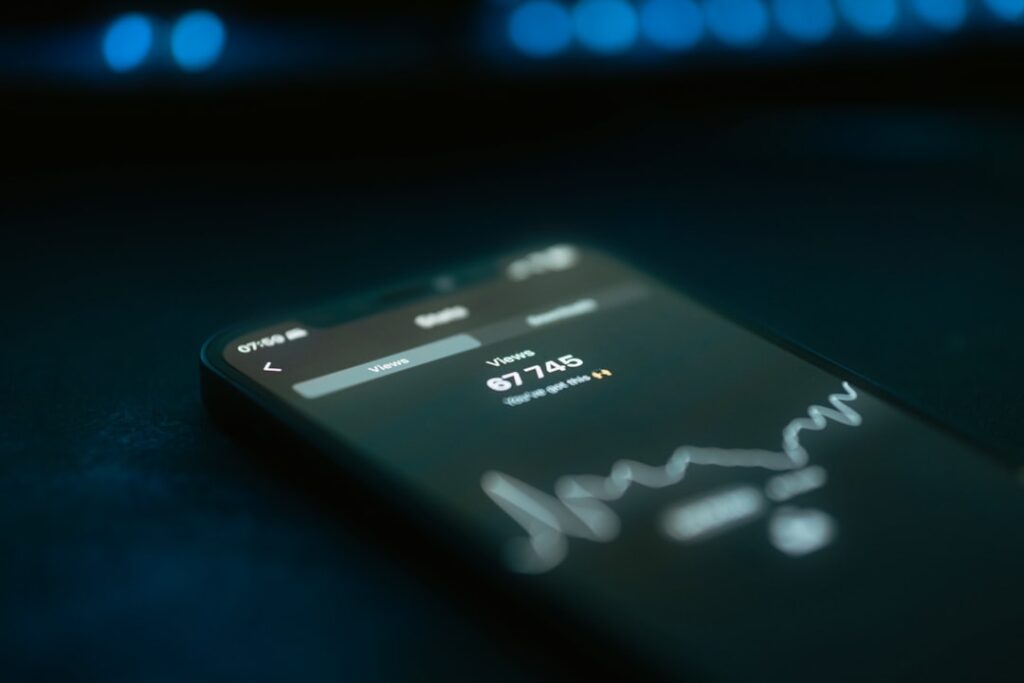Effective communication serves as the cornerstone of human interaction, influencing relationships, professional success, and personal fulfillment. It is not merely about exchanging information; it encompasses the ability to convey thoughts, feelings, and intentions in a manner that resonates with others. In both personal and professional contexts, the clarity of communication can determine the outcome of discussions, negotiations, and collaborations.
When individuals communicate effectively, they foster an environment of trust and understanding, which is essential for building strong relationships. Conversely, poor communication can lead to misunderstandings, conflict, and a breakdown in relationships, highlighting the critical need for individuals to hone their communication skills. Moreover, effective communication is vital in a world that is increasingly interconnected.
In diverse workplaces and multicultural societies, the ability to articulate ideas clearly and listen actively becomes even more crucial. Misinterpretations can arise from cultural differences or language barriers, making it imperative for individuals to adapt their communication styles accordingly. The ability to express oneself clearly while also being receptive to others’ perspectives can bridge gaps and foster collaboration.
In essence, effective communication is not just about speaking; it involves a holistic approach that includes listening, understanding, and responding appropriately to create meaningful connections.
Table of Contents
Key Takeaways
- Effective communication is crucial for successful interactions and relationships in both personal and professional settings.
- Nonverbal communication, such as body language, plays a powerful role in conveying messages and emotions.
- Active listening is essential for understanding others and building strong connections.
- Asking the right questions can lead to deeper understanding and more meaningful conversations.
- Overcoming communication barriers is necessary for clear and effective communication in diverse situations.
Nonverbal Communication: The Power of Body Language
The Power of Nonverbal Communication
Nonverbal communication plays a vital role in how messages are conveyed and interpreted. It encompasses a range of cues, including facial expressions, gestures, posture, and eye contact, all of which can significantly enhance or detract from verbal messages. For instance, a warm smile can convey friendliness and openness, while crossed arms may signal defensiveness or discomfort.
Understanding Nonverbal Signals
Understanding these nonverbal signals is essential for effective communication, as they often communicate emotions and attitudes more powerfully than words alone. In many cases, people may say one thing while their body language suggests something entirely different, leading to confusion or misinterpretation. Furthermore, the context in which nonverbal communication occurs can greatly influence its meaning.
Cultural Considerations in Nonverbal Communication
Cultural norms dictate how body language is perceived; what may be considered an appropriate gesture in one culture could be offensive in another. For example, maintaining eye contact is often seen as a sign of confidence in Western cultures but may be viewed as disrespectful in certain Asian cultures. Therefore, being attuned to the nuances of nonverbal communication is crucial for effective interaction across diverse settings.
Enhancing Effective Communication
By becoming more aware of our own body language and that of others, we can enhance our ability to connect with people on a deeper level and ensure that our messages are received as intended.
Active Listening: The Key to Understanding

Active listening is an essential component of effective communication that goes beyond merely hearing words; it involves fully engaging with the speaker to understand their message and emotions. This practice requires concentration and a genuine interest in what the other person is saying. By employing techniques such as nodding, maintaining eye contact, and providing verbal affirmations like “I see” or “I understand,” listeners can demonstrate their attentiveness and encourage the speaker to share more openly.
Active listening fosters an environment where individuals feel valued and respected, which can lead to more meaningful conversations and stronger relationships. Moreover, active listening is instrumental in conflict resolution and problem-solving scenarios. When individuals feel heard and understood, they are more likely to lower their defenses and engage in constructive dialogue.
This approach not only helps clarify misunderstandings but also allows for the exploration of different perspectives. By asking clarifying questions and paraphrasing what has been said, active listeners can ensure that they grasp the speaker’s intent accurately. Ultimately, mastering the art of active listening enhances interpersonal relationships and promotes a culture of open communication where all parties feel empowered to express themselves.
The Art of Asking the Right Questions
Asking the right questions is an art form that can significantly enhance communication effectiveness. Questions serve as tools for exploration, clarification, and engagement, guiding conversations toward deeper understanding. Open-ended questions—those that cannot be answered with a simple “yes” or “no”—encourage elaboration and invite the speaker to share their thoughts more freely.
For instance, instead of asking “Did you like the presentation?” one might ask “What aspects of the presentation resonated with you?” This shift not only prompts a more detailed response but also demonstrates genuine interest in the speaker’s perspective. In addition to fostering richer dialogue, asking insightful questions can also facilitate critical thinking and problem-solving. By posing thought-provoking inquiries, communicators can challenge assumptions and encourage others to consider alternative viewpoints.
This approach is particularly valuable in collaborative settings where diverse ideas are essential for innovation. Furthermore, well-timed questions can help steer conversations back on track when discussions veer off course or become unproductive. Ultimately, mastering the art of questioning empowers individuals to engage more meaningfully with others while promoting a culture of curiosity and exploration.
Overcoming Communication Barriers
Communication barriers can arise from various sources, including language differences, cultural misunderstandings, emotional states, and even physical environments. These obstacles can hinder effective interaction and lead to frustration or conflict if not addressed appropriately. For instance, in multicultural settings where individuals speak different languages or dialects, misinterpretations may occur due to linguistic nuances or idiomatic expressions that do not translate well.
To overcome these barriers, it is essential for communicators to be patient and adaptable, employing strategies such as simplifying language or using visual aids to enhance understanding. Additionally, emotional barriers can significantly impact communication effectiveness. Stress, anxiety, or anger can cloud judgment and distort perceptions, making it challenging for individuals to engage constructively with one another.
Recognizing these emotional states—both in oneself and in others—can help mitigate their effects on communication. Techniques such as taking deep breaths or pausing before responding can create space for reflection and clarity. By fostering an environment where individuals feel safe to express their emotions without fear of judgment or retaliation, organizations and communities can cultivate open lines of communication that transcend barriers.
Tailoring Your Communication Style to Different Audiences

Understanding the Importance of Audience Adaptation
The ability to tailor one’s communication style to suit different audiences is a vital skill that enhances effectiveness across various contexts. Different groups may have distinct preferences regarding how information is presented; for example, a formal business meeting may require a more structured approach compared to a casual brainstorming session among friends. Understanding the audience’s background, interests, and expectations allows communicators to adjust their tone, vocabulary, and delivery methods accordingly.
Key Benefits of Adapting Communication Style
This adaptability not only ensures that messages are received positively but also fosters engagement by resonating with the audience’s needs. Moreover, tailoring communication extends beyond mere content adjustments; it also involves being mindful of nonverbal cues and emotional dynamics within the group. For instance, when addressing a diverse audience with varying levels of expertise on a subject matter, it may be beneficial to provide context or background information before delving into complex concepts.
Effective Strategies for Audience Engagement
Similarly, recognizing when an audience appears disengaged or confused allows communicators to pivot their approach—whether by inviting questions or incorporating interactive elements—to re-engage listeners effectively. This ability to adapt and respond to the audience’s needs is crucial in maintaining their interest and promoting a deeper understanding of the message being conveyed.
Mastering the Art of Audience Adaptation
Ultimately, mastering the art of audience adaptation enhances overall communication effectiveness while promoting inclusivity and understanding. By being aware of the audience’s needs and preferences, communicators can tailor their approach to create a more engaging and effective communication experience.
Practicing Empathy and Emotional Intelligence in Communication
Empathy and emotional intelligence are integral components of effective communication that enable individuals to connect on a deeper level with others. Empathy involves the ability to understand and share the feelings of another person; it allows communicators to step into someone else’s shoes and appreciate their perspective fully. This practice fosters trust and rapport in relationships by demonstrating genuine care for others’ experiences.
When individuals feel understood on an emotional level, they are more likely to engage openly in conversations and share their thoughts without reservation. Emotional intelligence complements empathy by equipping individuals with the skills needed to navigate their own emotions as well as those of others during interactions. This includes recognizing emotional triggers, managing stress responses, and responding appropriately to others’ feelings.
For example, during a heated discussion where tensions may run high, an emotionally intelligent communicator can remain calm and composed while acknowledging the emotions at play. By validating others’ feelings—whether through verbal affirmations or empathetic gestures—individuals can create an atmosphere conducive to constructive dialogue. Ultimately, practicing empathy and emotional intelligence enriches communication experiences by fostering deeper connections and promoting mutual understanding among individuals from diverse backgrounds.
If you’re exploring unique and personal ways to keep your relationship fresh, consider reading about creative BF contact names to add a playful touch to your daily interactions. For more insights on maintaining strong emotional connections, even under unusual or challenging circumstances, you might find the article “Signs an Inmate Really Loves You: Unlocking the Truth” particularly enlightening. It delves into the complexities of relationships with significant constraints and offers perspective on genuine affection and commitment. You can read more about it here.
FAQs
What are some popular contact names for boyfriends?
Some popular contact names for boyfriends include “Babe,” “Baby,” “Love,” “Honey,” “Sweetheart,” and “Darling.”
Are there any unique or creative contact names for boyfriends?
Yes, some unique or creative contact names for boyfriends could include “Captain,” “My King,” “My Rock,” “My Everything,” “My Hero,” and “My Prince Charming.”
Is it common to use emojis in contact names for boyfriends?
Yes, it is common to use emojis in contact names for boyfriends. Emojis can add a playful or affectionate touch to the contact name, such as using heart emojis or kiss emojis.
Can contact names for boyfriends vary based on cultural or regional differences?
Yes, contact names for boyfriends can vary based on cultural or regional differences. Different cultures and regions may have their own unique terms of endearment or affectionate nicknames for significant others.
What are some factors to consider when choosing a contact name for a boyfriend?
Some factors to consider when choosing a contact name for a boyfriend include personal preferences, the nature of the relationship, and the level of intimacy or affection desired in the contact name. It’s important to choose a contact name that both partners are comfortable with.




